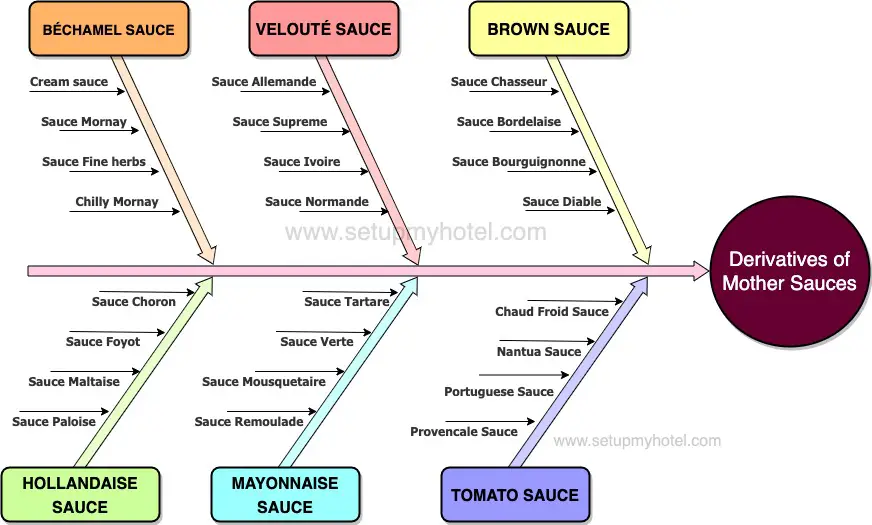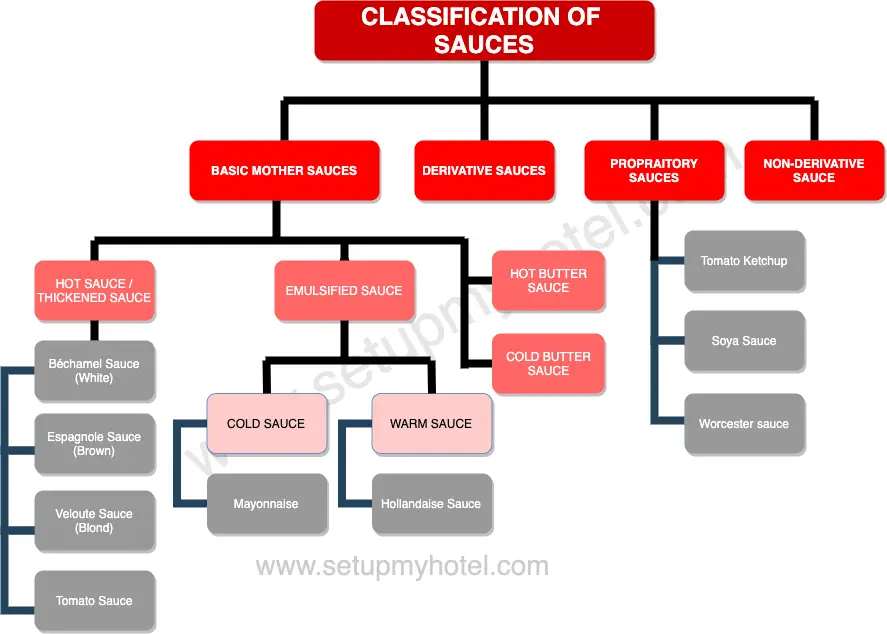The Six Mother Sauces: A Beginner’s Guide To French Cuisine

Derivatives of Basic Mother Sauce’s Basic mother sauces are the foundation of French cuisine and consist of five sauces: Béchamel, ...
Read more
Purpose And Function Of Sauces In Culinary Work

The Purpose and Function of Sauces in Culinary Work Sauces play an essential role in culinary work. They serve as ...
Read more
Classification Of Sauces Or Types Of Mother Sauces

Classification of Sauces or Types of Sauces Sauces are a crucial component of many cuisines worldwide, adding flavor, depth, and ...
Read more
21 Types Of Cooked Eggs / Types Of Eggs Cooked

Types of Cooked Eggs / Types of Eggs Cooked Eggs have been a staple of human diets for centuries. They ...
Read more
Hard Boiled Eggs Time – How to Make Perfect Hard Boiled Eggs?

Hard boiled eggs time – How to Make Perfect Hard Boiled Eggs? Hard boiled eggs are a versatile and healthy ...
Read more
19 Types Of Eggs

Types of eggs Eggs are a staple in many households and come in different varieties. The most commonly consumed eggs ...
Read more
The Basic Factors Of Food Presentation – Hospitality Industry

Basic Factors Of Food Presentation in the Hotel Industry The way food is presented has a significant impact on how ...
Read more
Uses Of Medium Duty Equipment In The Hotel Kitchen

Uses Of Medium Duty Equipment In The Hotel Kitchen Medium-duty equipment is a necessary piece of hotel kitchen infrastructure. It ...
Read more
6 Main Methods Of Cooking

Six Main Methods Of Cooking Cooking methods vary widely, each offering a unique approach to preparing food. The act of ...
Read more
Standard Meat Selection Criteria In Hotels

Standard Meat Selection Criteria in Hotels The standard meat selection criteria in hotels involve a careful consideration of various factors ...
Read more










